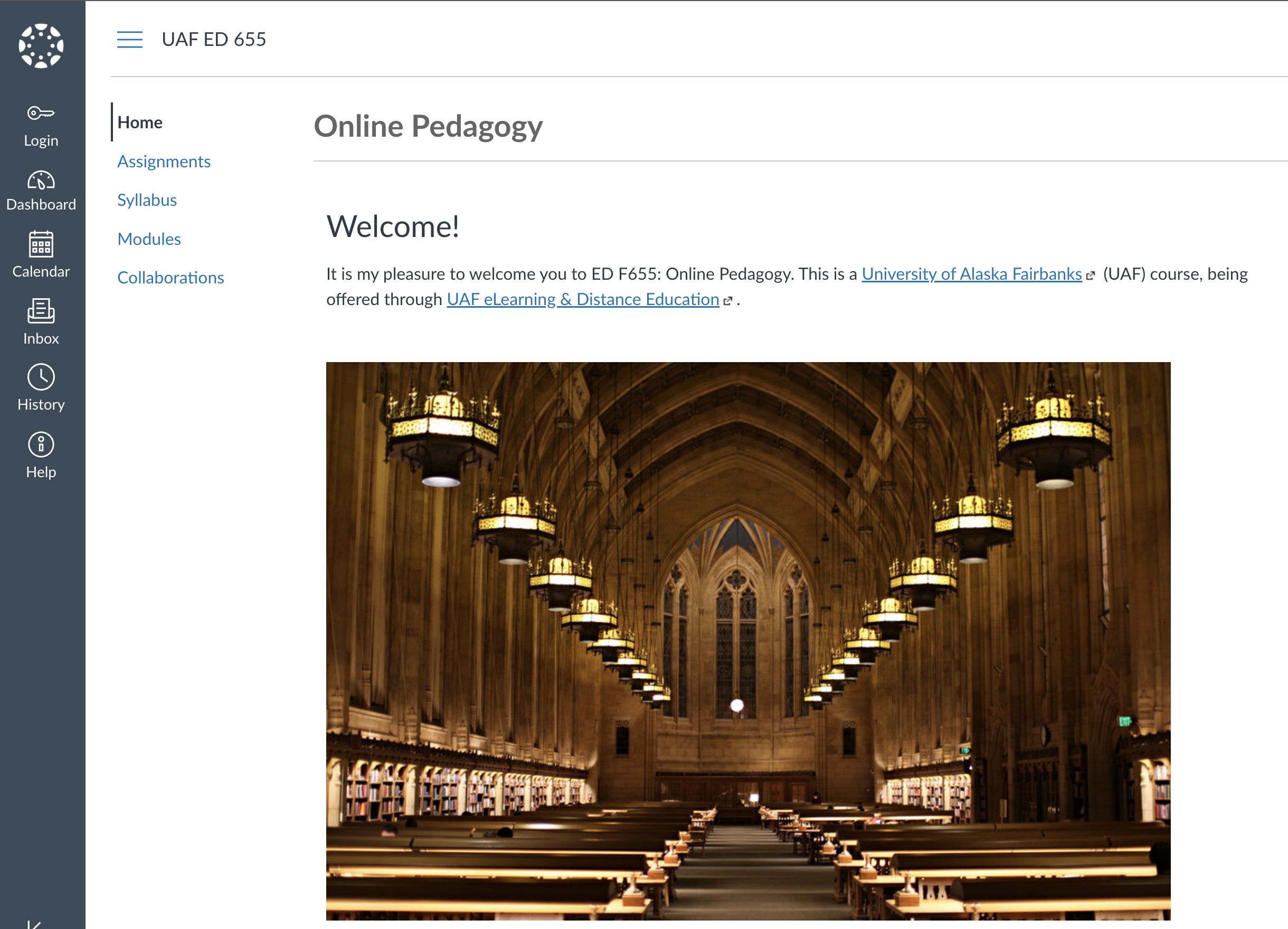Learner Reflection
Learning experience, real-world relevance or meta-reflection
What is It?
Reflection is an essential part of learning. It provides a way for us to articulate and understand our experiences. As such, engaging students by asking them to reflect on what they are learning or how they are learning influences their understanding. Recent research from the Harvard Business School confirms that, “reflection has an effect on both self-efficacy and task understanding.”
The act of reflection can be focused in a few ways. It can focus on one’s own learning and learning experience, it can focus on the real-world relevance and application of what one is learning, or it can be a meta-reflection on the learning environment itself.

How Can I Use Reflection in My Course?
As an instructor, student reflection can provide insight into how deeply students understand what they are learning, or it can be used to share insights among students. When thinking about using reflection in your course, consider whether you want students to share their reflections with you or with their peers, and how they will share their reflections.
Private Reflection
Shared between student and instructor.
- Questions could be given as part of required homework assignments.
- Journaling within Canvas or via Google Docs is possible so that each student has a private journal that is only available to the student and the instructor.
- Online journaling using a web publishing platform such as a blog makes it possible to restrict access to specific individuals. Students will have to grant access to you before you can see their reflection.
Class Reflection
Shared among students and the instructor.
- Discussion Boards within Canvas allows students to respond to the same questions. This gives the students the opportunity to see what others share and provide insight into the perspectives among peers.
- Class blogs within Canvas students to share their reflections among peers without being concerned about being open to the public.
- Group projects within Canvas enable students have email, file exchange, discussion board, and/or live web conferencing where they can share reflections.
- Collaboration tools outside of the LMS that are made available only to individuals explicitly invited to participate. Instructors and students will have to create unique (or shared) accounts.
Public Reflection
Shared among students, the instructor, and others outside the class.
- Individual blog/journal online. Students create their own sites or include their reflections on their current site if they already have one. This gives the opportunity to be professional and accountable to a larger community of practitioners.
- Class blog/journal online. You might consider having one class blog with students all contributing.
- Other collaboration tools. New social platforms appear regularly.
What kind of Reflection can I use in My Course?
Reflection on learning and the learning experience
Examples:
- How difficult did you find this lesson material in relation to the other lessons?
- Which concept caused the most difficulty for you in this lesson?
- It would be helpful to me if there were more example problems about:
- Do you feel you are “on track’ for finishing the course on schedule? Why? How are you planning to do so?
- What is interfering with your learning right now?
Reflection on the real-world relevance and application of what they are learning
Examples:
- After completing this lesson, what questions do you have or want to investigate further?
- Which topic do you think applies the most to your life? (Which are you most likely to use?)
- Explain how (the topic of the lesson) will play a part in your life ten years from now.
- What is one thing that you can take away from the (chapter, lecture, module) to apply to your life?
- Describe an experience you have had relating to (the topic of the lesson)
- Based on the concepts developed in this lesson, describe one real-world application for this theory (process, principle, or whatever it is etc.).
Meta-reflection on the learning materials, strategies, and structure employed in the course itself
Examples:
- Write a one-sentence summary of this week’s most important topic.
- Which topic did you find the most interesting?
- What was this lesson’s “muddiest moment” for you?
- Which concept did you find the easiest?
Questions and Considerations
Reflection activities can be particularly useful when used in online courses. In an online course it can be difficult to gauge how well students understand concepts because they are not directly in front of us. Reflection not only gives learners an opportunity to think about their learning for themselves, it also provides a mechanism for them to process and articulate their learning experience for you.
Technologies
The following list includes tools that support reflection activities:
In Practice

Online Pedagogy
This course, taught by Owen Guthrie, is online, project-based, and centered around a Community of Inquiry. For examples of Reflection, go to the modules and see how he has incorporated all three types of reflection (learning, relevant and meta-reflection).
Reflection in the Classroom
Chris Lott shares how he uses reflection in his ED F654 Digital Citizenship class.
Research Foundations
Di Stefano, G., Gino, F., Pisano, G. P., & Staats, B. R. (2016). Making Experience Count: The Role of Reflection in Individual Learning. Harvard Business School NOM Unit Working Paper No. 14-093; Harvard Business School Technology & Operations Mgt. Unit Working Paper No. 14-093; HEC Paris Research Paper No. SPE-2016-1181.
Shank, P. (Ed). (2007). The Online Learning Idea Book. Hoboken, NJ: John Wiley, & Sons, Inc.
Quinton, S., & Smallbone, T. (2010). Feeding forward: using feedback to promote student reflection and learning—a teaching model. Innovations in Education and Teaching International, 47(1), 125-135.
Yang, S. H. (2009). Using blogs to enhance critical reflection and community of practice. Journal of Educational Technology & Society, 12(2).
